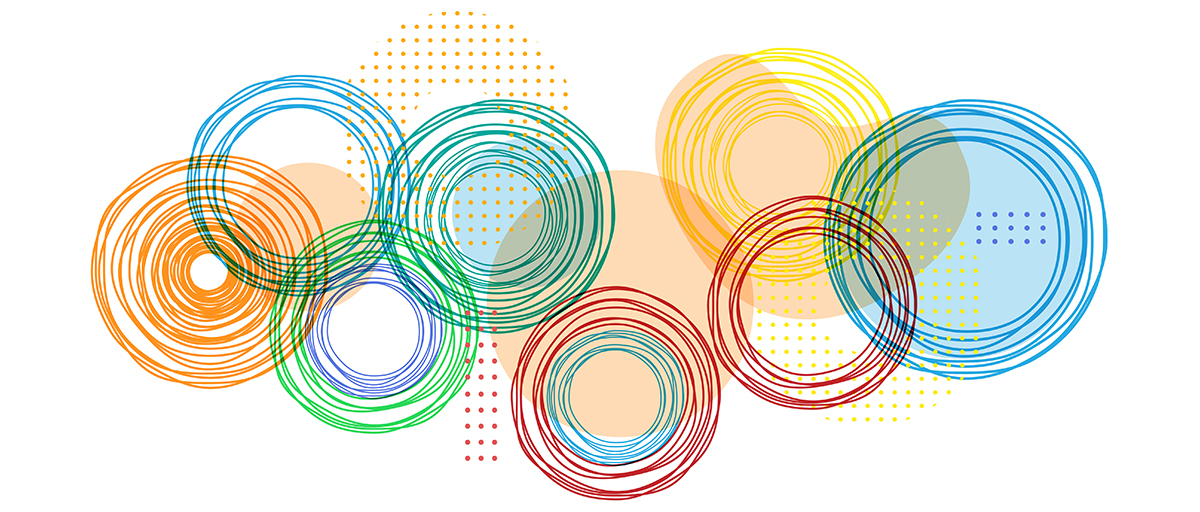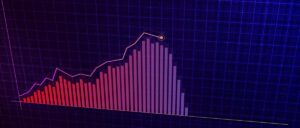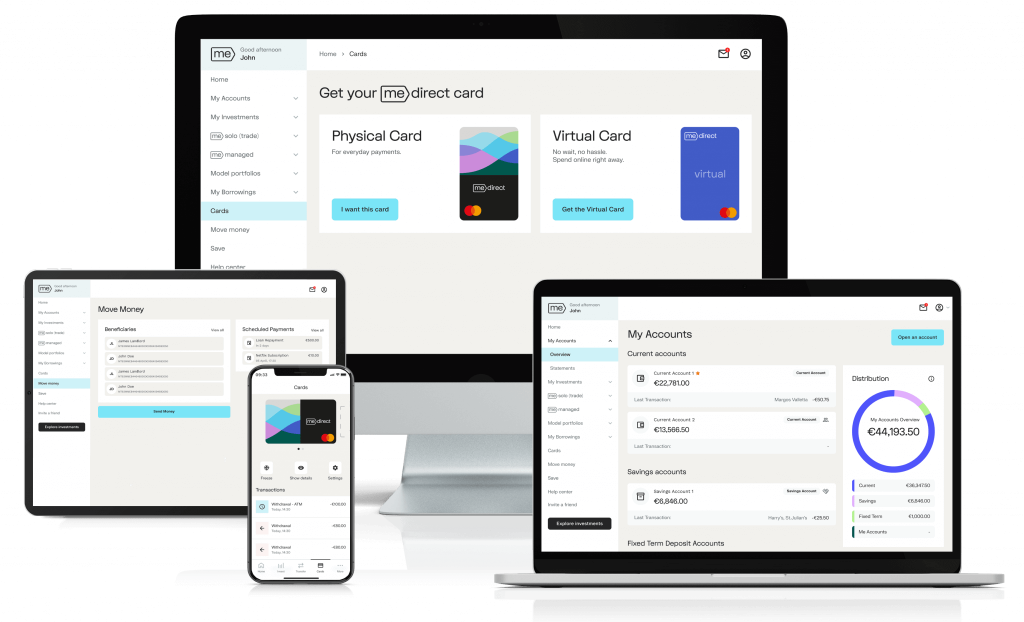 |
An article written by Ray Calleja: Head – Private Clients, MeDirect |
In previous articles, we discussed the importance of diversification in an investment portfolio, where you invest in securities that perform differently in a specific situation. It can help reduce volatility and potentially increase your returns over time. Today, we will discuss the problem where you could be investing in several mutual funds with overlapping positions, which can actually reduce the effectiveness of diversification.
A frequent investing theme of today is owning more than a dozen mutual funds. Often purchased over time with little thought as to how the collection fits together, if at all. Owning several funds can result in creating significant overlap of securities. That is, individual holdings within the mutual funds are often the same, or quite similar. While fund names differ, their holdings may not.
This can happen because different funds may highlight the same or similar parts of the market and result in a portfolio concentrated in one particular equity, industry, economic sector or geographic region. This can help dilute your effort of diversification. However, checking your portfolio for fund overlap is relatively easy.
Fund overlap will expose you to the risk of having too much money concentrated in one or a limited number of securities. This can lead to below-average returns and possibly higher volatility and ultimately it can mean that you will not achieve your financial goals. Many experts recommend that you should review your portfolio at least once a year to check for overlap and take the necessary steps to correct it. Admittedly, diversification cannot guarantee a profit or protect you against loss in down markets but it usually comes close to doing so.
Overlap in your portfolio can happen in many ways and it is not always so apparent. Let us say you own two funds which have clearly distinct and different investment strategies, say a value fund and a growth fund. The manager of the growth fund might emphasize a particular consumer staples equity because of the company’s position in a rapidly expanding market, while the manager of a value fund might like the same company’s financial fundamentals, e.g. free flowing cash flow. You may also cause overlap in your investment portfolio if you are easily influenced by big headlines in market news and you stray from your intended strategy by investing in single equities or funds that invest in specific economic sectors or industries. But in reality, if you already own a diversified portfolio, you are likely to be already exposed in these sectors.
The value of gold has shot up very significantly in the last few weeks and months. So, you think of buying an ETF (exchange-traded-fund) that attempts to reflect the performance of the price of gold bullion. However, your existing equity funds may already own shares of many gold-related stocks, so your new investment may render you excessively exposed to any meaningful changes in gold prices.
By buying a sector fund you may be exposing yourself to an overall concentrated exposure to a niche of the market, potentially hindering long-term returns.
How to maintain diversification
First start by examining your portfolio and examine your asset allocation. Is your balance of equities, bonds, and short-term investments (such as cash and bank accounts) right in terms of your investment goals and time horizon? Next, evaluate diversification within each asset class.
One method would be to estimate the amount of overlap you may have in individual assets and specific market sectors by comparing the top holdings of all your funds. You can easily find the top holdings in your funds’ annual or semi-annual reports; most fund fact sheets also include this information (regularly updated and provided on the MeDirect website).
The Morningstar Style Box can also be extremely useful when it comes to making sure that your portfolio is still diversified. Based on a fund’s most recent portfolio fact sheet the style box will tell you where the fund manager has gone with his/her strategy. Has he stuck to the original plan or has he deviated from it over time? By using the Style Box, you should aim to cover the four corners of the box. After all, value funds do not act much like growth portfolios, and small-cap funds behave differently from large-cap offerings. So, if you are too heavy in large value, try to increase your exposure in large-growth, small-value, or small-growth funds. We do tend to overdo investments in the large-cap global companies. They are constantly in the news and are easy to buy. So, once you have selected a large-value and a large-growth fund, your next step is to start looking at options elsewhere in the style box.
In previous articles, we also discussed the statistical measure called R2 (R-squared), which tells you about a particular investment’s correlation or its similarity to a given benchmark. An R-squared of 100 indicates that all movements of a fund can be explained by movements in the index. Therefore, if you already have, say an S&P 500 Index Fund, you want to make sure that other funds, which you own in your portfolio do not have an R-squared that is too close to 100. This would indicate a level of fund overlap that causes both funds to perform very similarly. Remember, you want proper diversification to minimize market risk.
Another common occurrence for the potential for fund overlap exists when you own more than one fund managed by the same fund manager. No matter how outstanding and excellent the person or team has been, mutual fund managers have particular philosophies and styles that they rarely deviate from, irrespective of the fund they run. Just like you have your own way of going about your work, fund managers have theirs. If he/she is bullish on a particular stock or sector, he might ensure that that stock or sector is a part of all the funds he/she manages. So, when that stock/sector goes down, your entire return will get hit and so does the value of your portfolio.
Even if the funds in your portfolio had low levels of overlap when you first purchased them, it doesn’t mean their respective styles won’t drift towards each other. This is called style drift and it is not uncommon. For example, a mid-cap stock fund could slowly drift toward a large-cap categorization as the fund manager progressively buys stocks of larger companies, hence that is why it is recommended that you review your fund portfolio at least annually.
In terms of your equity allocation you will need to assess your holdings in U.S. / European large-cap stocks, a small allocation to mid- and small-cap U.S. / European stocks and possibly another small allocation to emerging market stocks. You should also look at your portfolio’s exposure to growth and value – ideally you should have a similar allocation to each investment style. Your portfolio should also reflect a similar picture in terms of weight to the economic sectors, which are found in the broad market. Your stakes in individual companies should not exceed 5% to 10% of your overall investment portfolio. In the case of bonds, investors should see that their main allocation is in investment-grade corporate bonds and government bonds or Treasuries, with only a small allocation in high-yield and other non-investment grade bonds.
If you find out that your mutual funds have significant overlapping positions, you need to take corrective action right away. You need to bring your portfolio back to your target allocation by selling those funds with the redundant and overloaded asset (and sub-asset) classes and using the sale proceeds to purchase shares of areas, where your portfolio has insufficient representation. Deciding which fund to sell can be challenging, but it may help to consider which one has performed better and which one is more expensive. Or, make it easy on yourself and consult a financial advisor (you can contact one at MeDirect by emailing wealthsupport@medirect.com.mt and ask for an appointment).
The importance of regularly examining your portfolio cannot be over-stated. You will thus be able to maintain exposure to a wide variety of assets which will help you weather market turbulences that occur from time to time. Like that you will stay on top of fund overlap as you adhere to your long-term investment objectives.
Be mindful in the future
Going forward and having your attention drawn to avoid fund overlap, you should, in future, avoid investing in funds with positions that overlap significantly. Before buying a new fund have a close look at the fund holdings to avoid common exposures to your portfolio, hence rendering investment in such exposures redundant.
Limiting overlap is one of the most important steps you can take to reduce risk in your portfolio. Still, you probably will not be able to avoid overlap altogether, as many funds invest in the same companies. Your goal should be to minimise overlap, not totally eliminate it.
The above is for informative purposes only and should not be construed as an offer to sell or solicitation of an offer to subscribe for or purchase any investment. The information provided is subject to change without notice and does not constitute investment advice. MeDirect Bank (Malta) plc has based this document on information obtained from sources it believes to be reliable but which have not been independently verified and therefore does not provide any guarantees, representations or warranties.
MeDirect Bank (Malta) plc, company registration number C34125, is licensed by the Malta Financial Services Authority under the Banking Act (Cap. 371) and the Investment Services Act (Cap. 370).
The financial instruments discussed may not be suitable for all investors and investors must make their own informed decisions and seek their own advice regarding the appropriateness of investing in financial instruments or implementing strategies discussed herein.
If you invest in any of the products discussed you may lose some or all of the money you invest. The value of your investment may go down as well as up. A commission or sales fee may be charged at the time of the initial purchase for an investment and may be deducted from the invested amount therefore lowering the size of your investment. Any income you get from this investment may go down as well as up. This product may be affected by changes in currency exchange rate movements thereby affecting your investment return therefrom. The performance figures quoted refer to the past and past performance is not a guarantee of future performance or a reliable guide to future performance. Any decision to invest in a mutual fund should always be based upon the details contained in the Prospectus and Key Investor Information Document (KIID), which may be obtained from MeDirect Bank (Malta) plc.





